Pennsylvania Superior Court Approves Use of Google Geofence Warrants in Criminal Cases
Criminal Defense Lawyer Zak T. Goldstein, Esquire
The Pennsylvania Superior Court has issued an important decision on digital privacy and criminal investigations. In Commonwealth v. Choice, the Court considered, for the first time, whether police may use geofence warrants to obtain Google location history data even though the warrants, by definition, do not identify a particular suspect. These warrants require Google to search its database for any devices present in a particular area during a specific time period. The Superior Court ultimately upheld the use of the geofence warrant and the conviction, finding that the warrants were sufficiently narrow (particular) and supported by probable cause.
The Facts of the Case
In January 2019, a nurse was driving his Toyota Tundra northbound on Route 309 in Montgomery County when he was suddenly shot in the arm. The complainant immediately called 911 while following the suspect’s maroon vehicle. Although he was able to give a description and even followed the vehicle for over a mile, he could not identify the license plate before losing sight of the car, leaving the police with few suspects.
Trooper Eugene Tray of the Pennsylvania State Police was assigned to investigate. With little physical evidence tying a suspect to the shooting, Trooper Tray applied for a geofence warrant in December 2020. The warrant asked Google to provide anonymized location history data for any devices within a defined stretch of Route 309 and the Highland Avenue exit ramp between 9:20 and 9:27 p.m., which was the time when the shooting occurred.
In response, Google provided an anonymized list of device IDs. Trooper Tray determined that one of the mobile devices matched the movements of the suspect’s car. He then obtained a second warrant compelling Google to disclose the subscriber information for that device. Google linked the phone to the defendant, who was later charged with aggravated assault. Prior to trial, the defendant moved to suppress the evidence, arguing that the warrants amounted to unconstitutional “general searches” of millions of Google accounts. The trial court denied the motion to suppress, and the defendant was convicted in a stipulated bench trial. He appealed.
The Pennsylvania Superior Court’s Ruling
On appeal, the defendant argued that the warrants failed both the probable cause requirement and the constitutional limits on overbroad searches. He claimed there was no individualized suspicion that the shooter had a cell phone, let alone one running Android software with Google location services enabled. He also argued that the process gave law enforcement unlimited discretion because it allowed them to sift through unrelated device data.
The Superior Court rejected these arguments. The Court emphasized that cell phone use is so pervasive that it is reasonable to assume most people, including criminal suspects, carry one. Combined with the precise details provided by the victim during his 911 call, the Court found there was a “fair probability” that Google’s location history data would produce relevant evidence.
The Court also concluded that the warrants were not overbroad. Unlike warrants that sweep up months of data or large geographic areas, this one was carefully limited to two short road segments and a seven-minute time window. Moreover, because Google anonymized the data before handing it over, police could not arbitrarily rummage through personal information. Officers were required to return to court for a second warrant to obtain the identity of the one device they believed was relevant.
Notably, this was a mater of first impression for a Pennsylvania appellate court. Other courts, such as the United States Court of Appeals for the Fifth Circuit, have found that geofence warrants are unconstitutional. Accordingly, this issue may be reviewed by the Pennsylvania Supreme Court or the United States Supreme Court.
The Takeaway
This case is a significant development in Pennsylvania law. It shows that courts are prepared to approve geofence warrants where police can identify the precise location and timeframe of a crime. Prosecutors will likely seek this type of data more frequently in serious cases ranging from shootings to robberies and other violent offenses.
At the same time, the decision highlights the tension between privacy rights and investigative technology. Defense attorneys should continue to challenge geofence warrants as unconstitutional general searches, and future cases, including those currently pending before the Pennsylvania Supreme Court such as Commonwealth v. Kurtz, may further refine the law. For now, however, defendants should expect prosecutors to use Google location data when it is available.
Facing criminal charges? We can help.
Goldstein Mehta LLC Criminal Defense
If you are facing criminal charges or under investigation by the police, we can help. We have successfully defended thousands of clients against criminal charges in courts throughout Pennsylvania and New Jersey. We have successfully obtained full acquittals and dismissals in cases involving charges such as Conspiracy, Aggravated Assault, Rape, Violations of the Uniform Firearms Act, and First-Degree Murder. We have also won criminal appeals and PCRAs in state and federal court, including the successful direct appeal of a first-degree murder conviction and the exoneration of a client who spent 33 years in prison for a murder he did not commit. Our award-winning Philadelphia criminal defense lawyers offer a free criminal defense strategy session to any potential client. Call 267-225-2545 to speak with an experienced and understanding defense attorney today.


